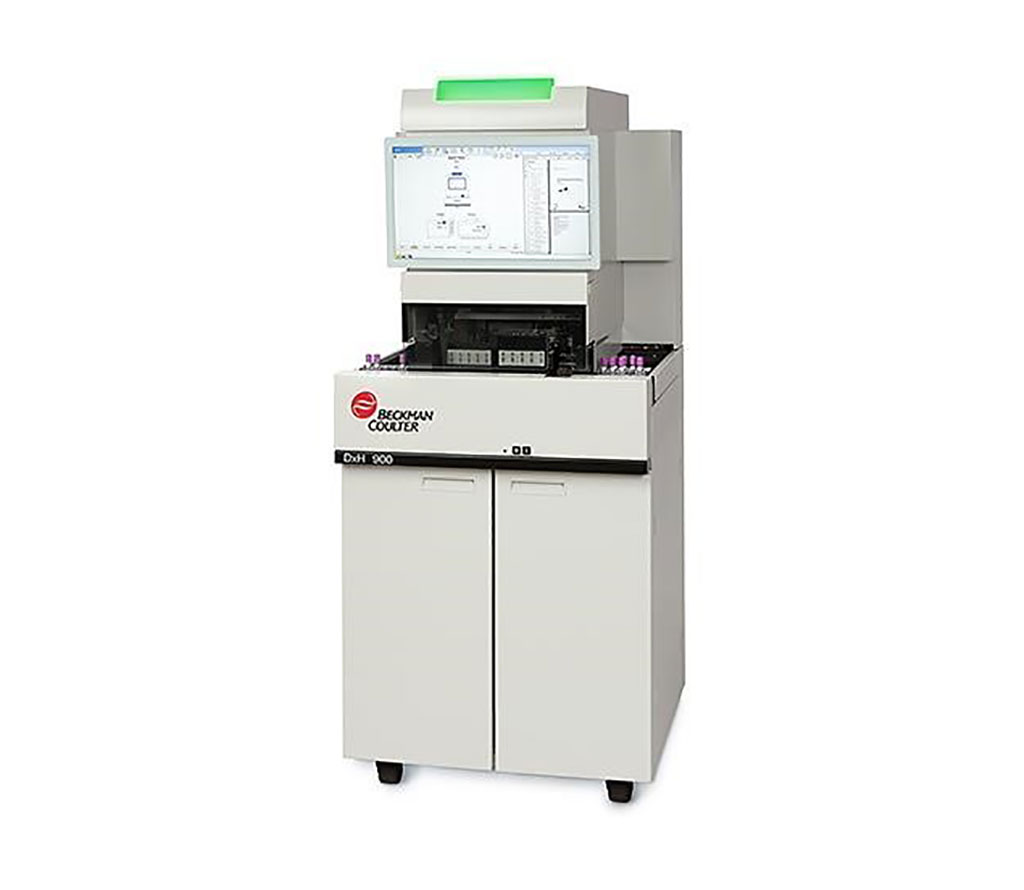Monocyte Distribution Width Evaluated as a Sepsis Indicator
By LabMedica International staff writers
Posted on 01 Jul 2021
Most current automated hematology analyzers have enhanced cell counting functions including the addition of new cell types such as nucleated red blood cells or immature granulocytes, making it possible to obtain a precise quantification of peripheral blood cells in pathological conditions.Posted on 01 Jul 2021
Cellular analysis technologies are able to explore qualitative aspects of leukocytes (white blood cells, WBCs) and provide numerous additional parameters, indicating functional information for each leukocyte type, the so-called cell population data (CPD). Since sepsis represents a life-threatening condition, without characteristic signs or symptoms, early detection for timely and appropriate management is crucial to patient survival.

Image: The DxH 900 hematology analyzer enables the high-volume laboratory to achieve RBC, PLT and WBC differentials through near native-state cellular characterization (Photo courtesy of Beckman Coulter)
Medical Laboratorians at the University-Hospital of Padova (Padova, Italy) evaluated the diagnostic accuracy and prognostication of monocyte distribution width (MDW) in sepsis for patients admitted to Intensive Care Units (ICU). The scientists conducted a prospective observational study during the hospitalization of 506 adult patients admitted to the ICU. MDW was evaluated in 2,367 consecutive samples received for routine complete blood counts (CBC) performed once a day and every day during the study. Sepsis was diagnosed according to Sepsis-3 criteria and patients enrolled were classified in the following groups: no sepsis, sepsis, and septic shock. There were 346 men and 160 women, aged from 18 to 89 years (median 68 years) in the study.
Complete blood count (CBC) and MDW were analyzed using the UniCel DxH 900 (Beckman Coulter, Inc, Brea, CA, USA). At the same time, 2,128 samples were determined for C-reactive protein (CRP) and 2,035 samples for procalcitonin (PCT), as part of the clinical examination. Serum CRP was determined using a nephelometric/turbidimetric technique of the Dimension Vista System (Siemens Healthcare GmbH, Milan, Italy). PCT was determined using chemiluminescence immunoassay (CLIA) technology with paramagnetic microparticle solid phase of the LIAISONs BRAHMS PCTs II GEN System (DiaSorin, Saluggia, Italy).
The investigators reported that MDW values were significantly higher in patients with sepsis or septic shock in comparison to those within the no sepsis group: median 26.23, 28.97, and 21.99 respectively. ROC analysis demonstrated that AUC is 0.785 with a sensitivity of 66.88% and specificity of 77.79% at a cut-off point of 24.63. In patients that developed an ICU-acquired sepsis MDW showed an increase from 21.33 to 29.19. MDW increase was not affected by the etiology of sepsis, even in patients with COVID-19. In sepsis survivors a decrease of MDW values were found from the first time to the end of their stay: median from 29.14 to 25.67.
The authors concluded that MDW, a parameter that reflects a change in circulating monocytes volume in response to pro-inflammatory signals from infectious organisms referred to as pathogen-associated molecular patterns, can have potential clinical applications for early sepsis detection in hospital and ICU settings. The study was published on the July, 2021 issue of the journal Clinical Chemistry and Laboratory Medicine.
Related Links:
University-Hospital of Padova
Beckman Coulter
Siemens Healthcare
DiaSorin













